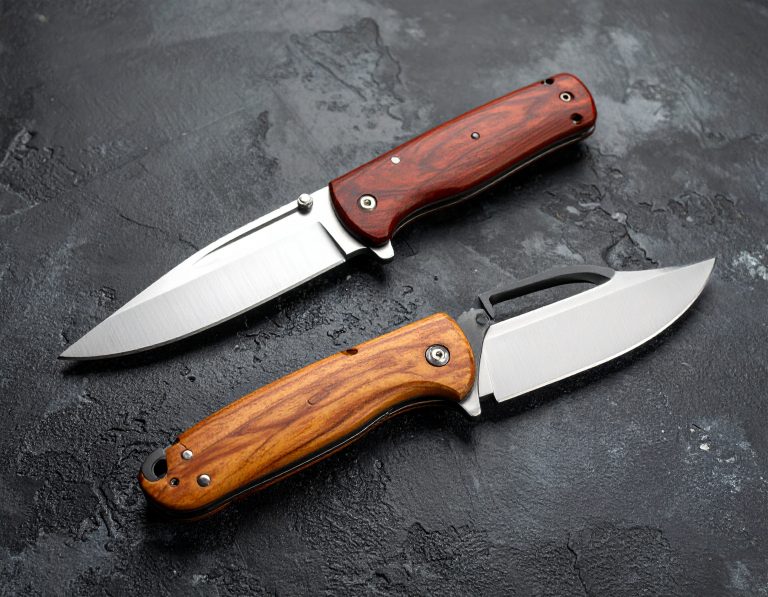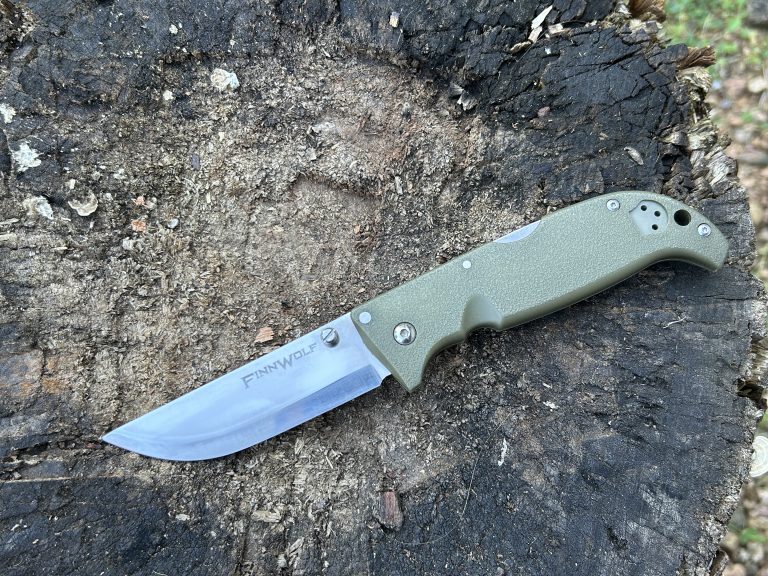Ruike P851-B Folding Tanto Knife Review
✅ Key specifications
According to manufacturer and retailer data:
- Overall length: ~206 mm (≈8.11″)
- Blade length: ~89 mm (≈3.5″)
- Blade thickness: ~3.5 mm
- Weight: ~160-162 g
- Blade steel: Sandvik 14C28N stainless steel, hardened to ~58-60 HRC
- Handle: G10 (fibreglass/epoxy laminate) scales + stainless steel 420 liner/plates
- Locking mechanism: Liner lock plus a “Thumb Up” safety mechanism to prevent accidental closure
- Opening mechanism: Flipper tab (one-hand opening) on bearings/rollers
- Blade profile: Tanto (strong point, good for piercing)
So, from the spec sheet we have a solid set of features for a mid-price folding knife.
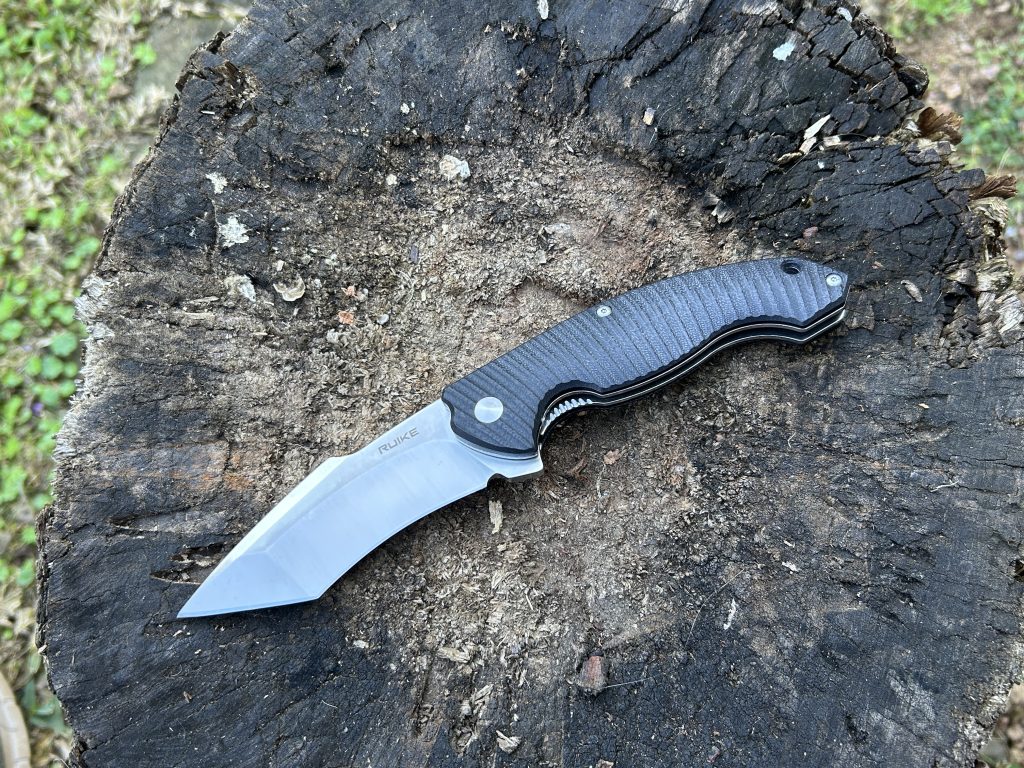
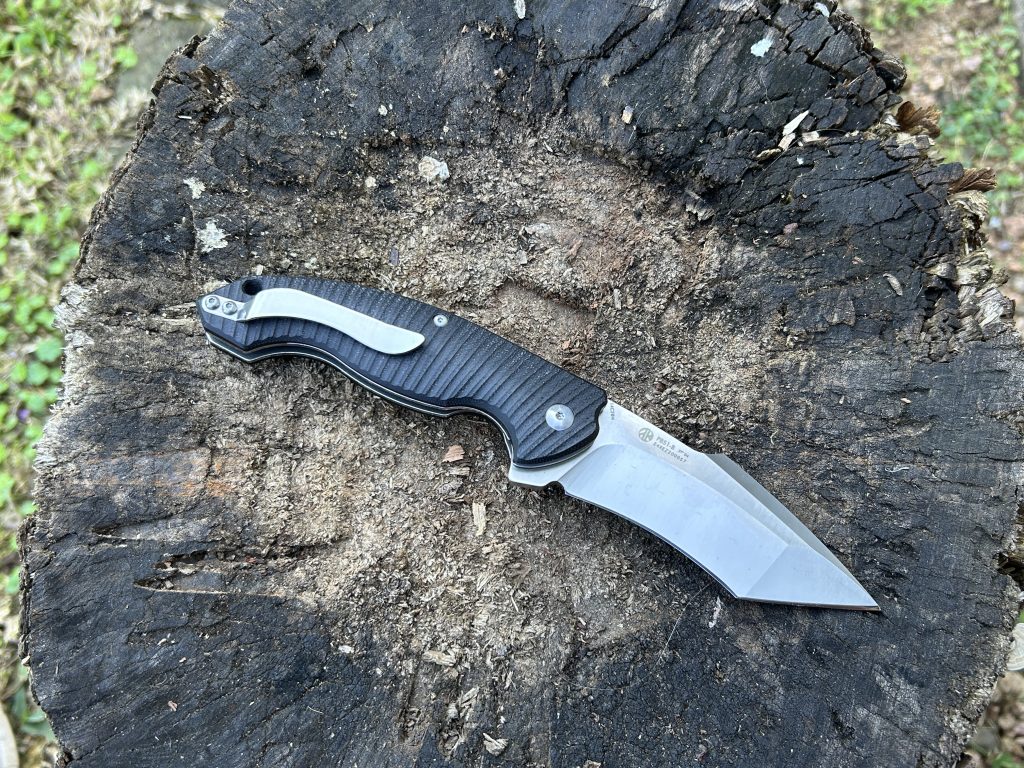
👍 What works well / strengths
Here are what I consider the strong points of this knife:
1. Quality of materials
- The blade’s steel, Sandvik 14C28N (or “14C28N” in other sources) is well regarded in budget / mid-tier knives: good corrosion resistance, decent edge retention, and relatively easy to sharpen.
- The handle material G10 is a strong choice: durable, provides good grip texture, resistant to wear. The inclusion of stainless liner/plates adds structural rigidity. These contribute to a build that feels robust.
- The hardness (~58-60 HRC) is a meaningful specification for the blade — that’s a respectable value for general use.
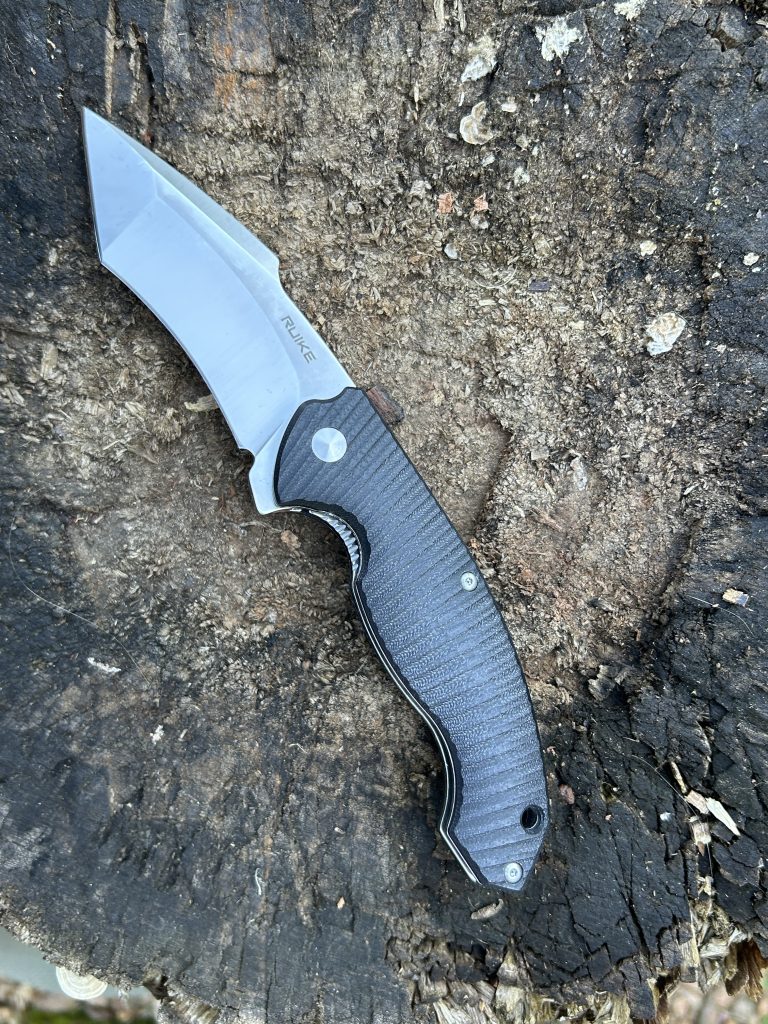
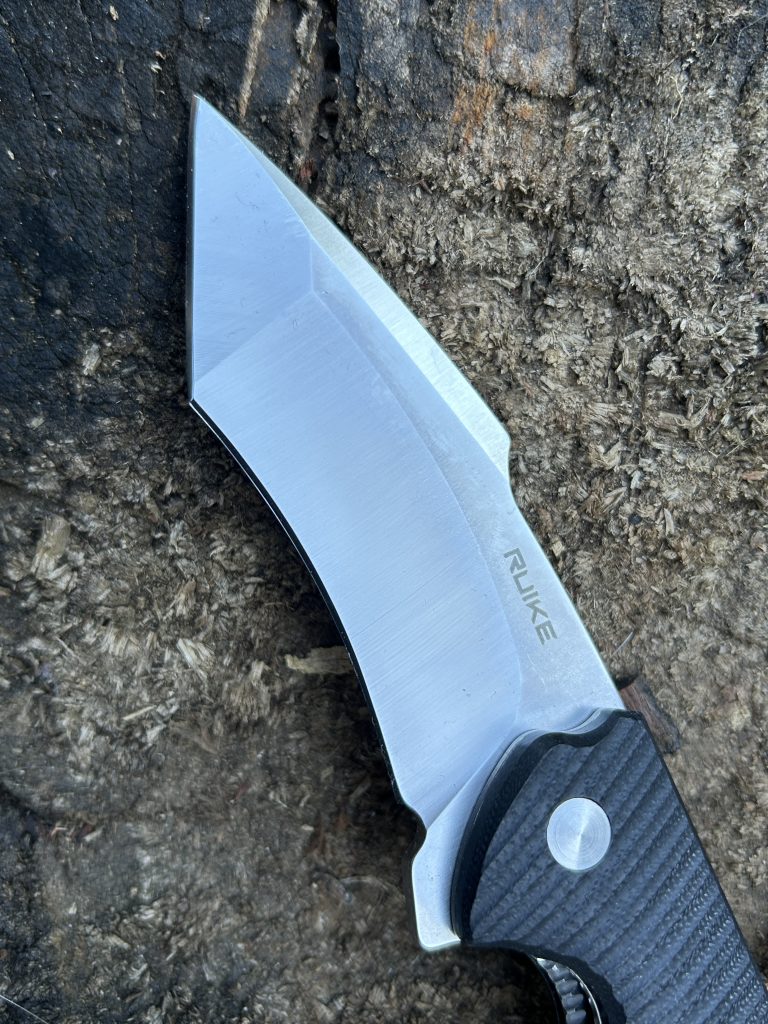
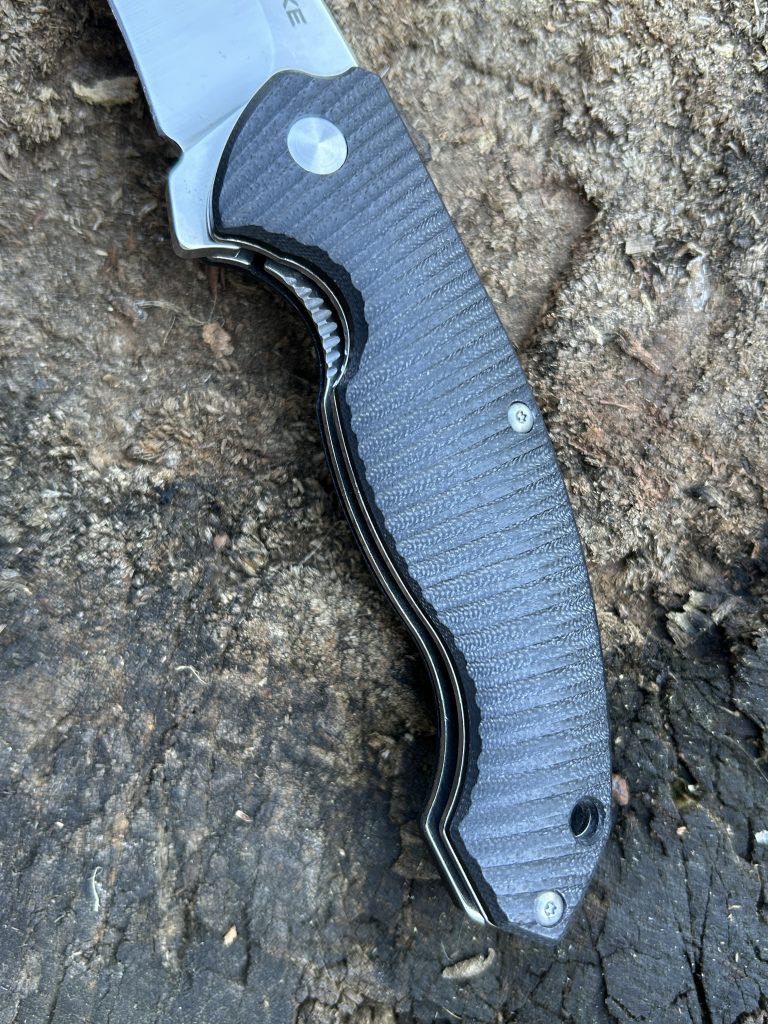
2. Practical size and carry
- With a blade around 3.5″ and overall length ~8″, it’s reasonably sized for many everyday carry (EDC) / outdoor use. It’s not ultra-compact, but for someone who wants something a little larger, this could hit a nice middle ground.
- The weight (~160g) is significant, but not excessive for a knife of this size and robustness. Many lighter knives sacrifice strength; this feels more substantial.
- The pocket clip is included (as per many descriptions) which helps carry convenience.
3. Good design for task versatility
- The tanto point is a good choice if you anticipate need for stronger tip work (piercing, more assertive tasks) or want a distinctive profile for rugged use. The trade-off is that tanto grind can make slicing less “long continuous curved” than drop-point styles, but for many tasks it’s quite suitable.
- The flipper plus bearing system offers one-hand deployment, which is a comfort factor for daily use or utility tasks.
- The “Thumb Up” safety is an extra layer of security beyond the standard liner-lock. That is a positive for people who carry and use their knife in more demanding contexts.
4. Value proposition
- From what the descriptions suggest, especially at its price point in many markets, the P851-B offers “more knife” than many similarly priced options. One reviewer said: “The Ruike P851 is a strong and great knife for the price… It will be hard to find more value for your money.” Leopard
- So for someone budget conscious, this offers a lot of features.
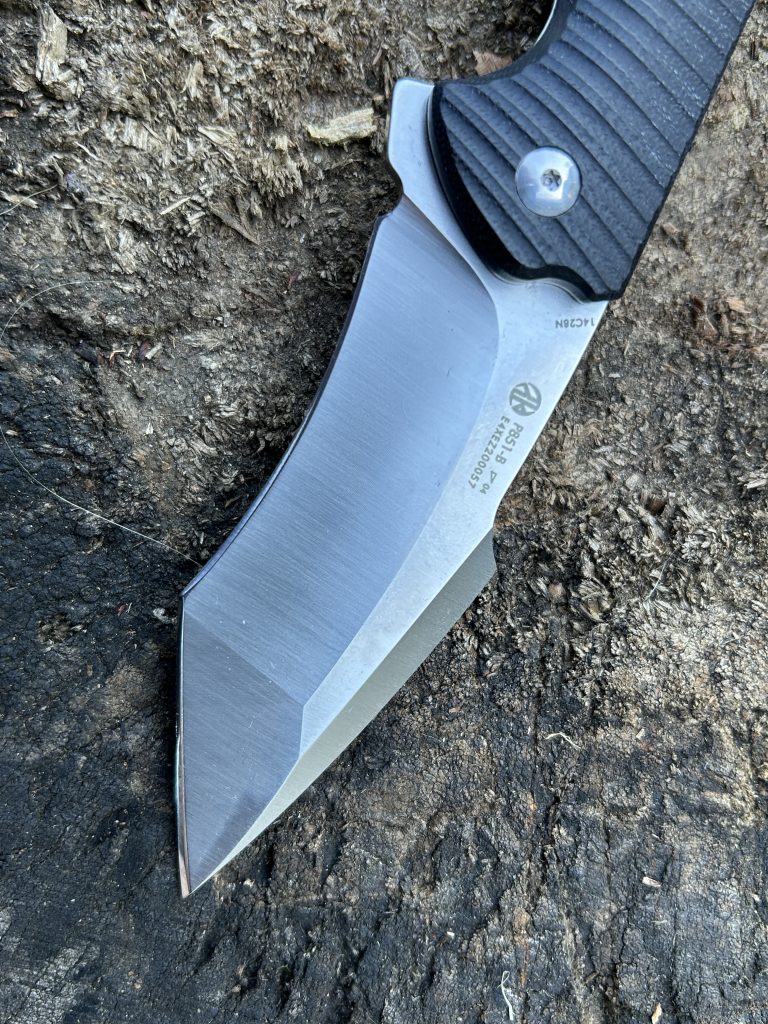
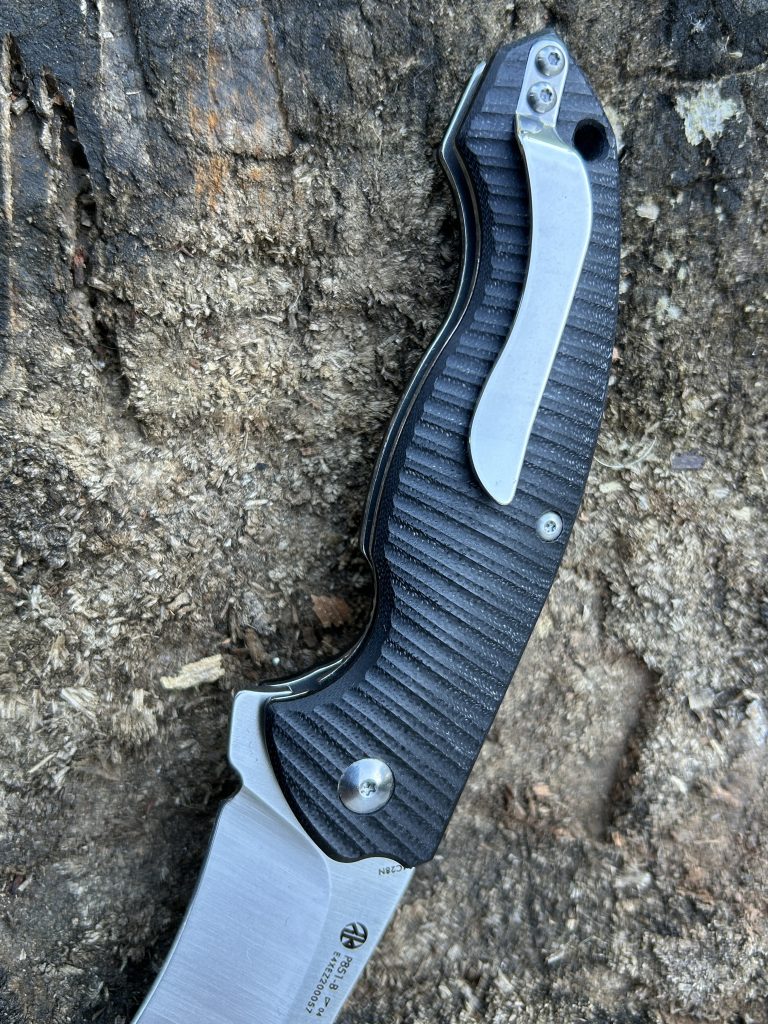
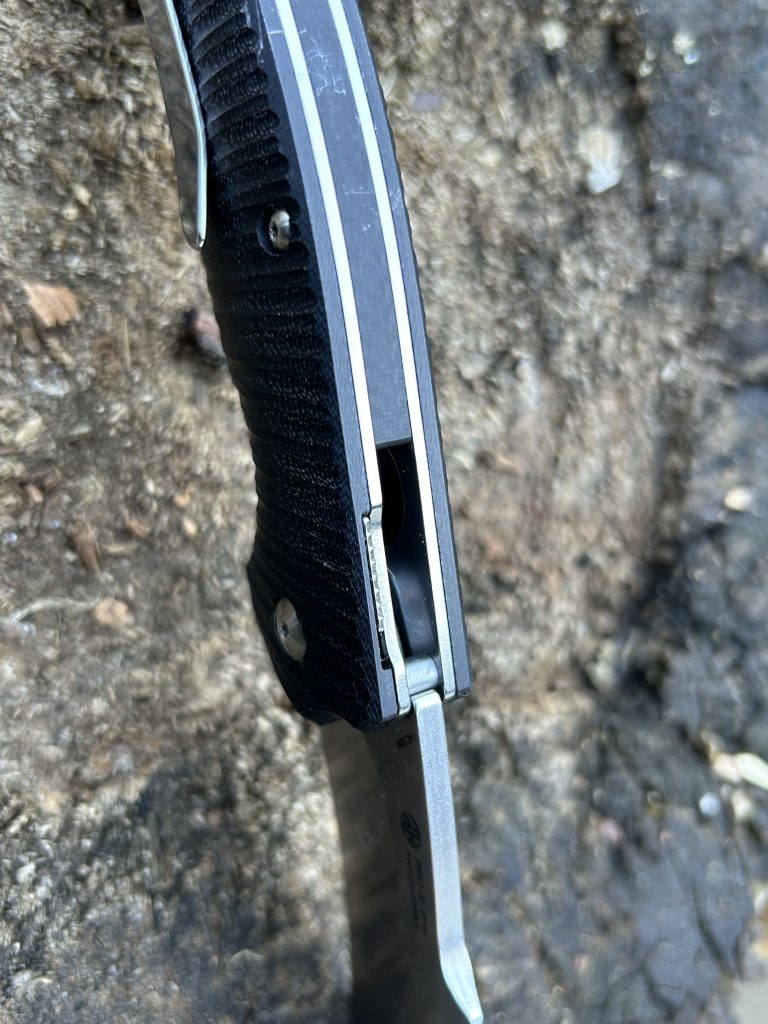
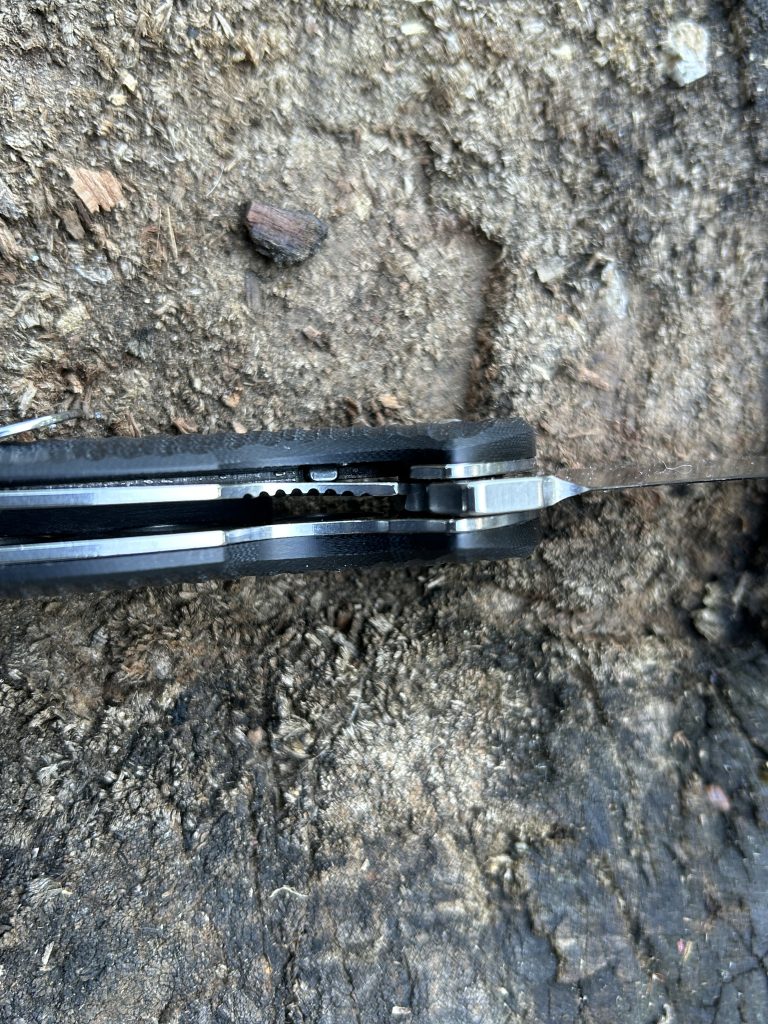
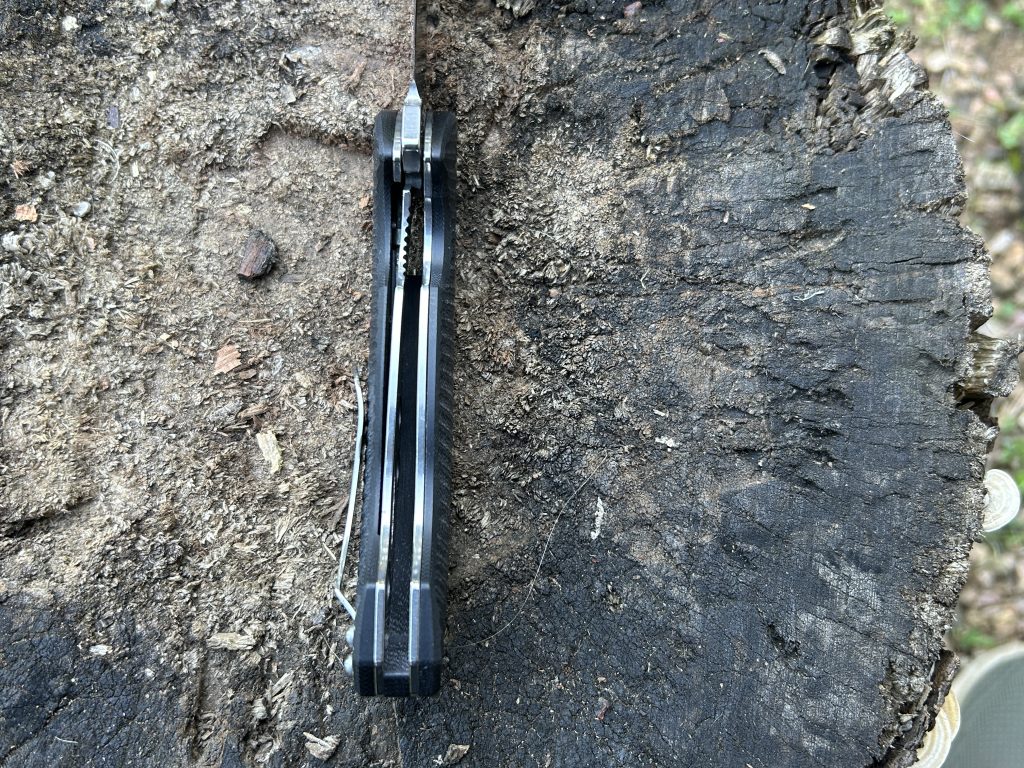
👎 Some limitations / things to watch
No product is perfect, so here are some caveats and potential drawbacks based on the specs and user commentary.
1. Size & carry-comfort trade-off
- At ~206mm overall and ~162g, this is not a “small every day carry” if you prefer ultra-light, ultra-small knives. It might feel bulky for casual pocket carry or for formal wear. If your carry style is minimalist, this might be on the larger side.
- The handle/knife length suggests it occupies significant pocket real estate. Depending on what you normally carry and wear (e.g., lighter clothing, smaller pockets), it may be a bit much.
2. Tanto blade shape trade-offs
- As mentioned, the tanto profile is great for durability and piercing, but slicing large amounts of material (especially curved cuts) may be less efficient compared to a high-belly drop-point or clip-point. If your main use is food prep, large sweeping cuts, or fine precision, you might find a different blade shape more comfortable.
- Some user commentary (on other Ruike models but maybe relevant) indicates that even good steel doesn’t always compensate for everyday ergonomic flow in slicing tasks. Example: “I’m pretty new to the knife game… but I really like it … the blade is made of 14C28N stainless, and at this price point I couldn’t find a knife with better steel.”
This is positive, but also the user is relatively new and perhaps tasks were lighter.

3. Build/finish quality variability & user comments
- While build specs are good, some user comments (though often about other Ruike models) raise concerns about long-term durability or finish issues. For example: “My clip broke after a couple months of office carry. The blade is also freckled with rust spots… It’s a cool knife but probably not the most durable.” (about a Ruike model)
- This doesn’t mean the P851-B necessarily has these issues, but it suggests you should inspect your unit carefully (especially screws/clip/lock) and maintain it (oil pivot, check screws) to avoid issues.
4. Market/legal carry considerations
- Depending on your region (including South Africa), the blade length (~89mm) may trigger certain legal limitations for carry or use. Always check local laws/regulations about folding knives, blade length, permitted carry, etc.
- Also, if you intend “tactical” or defense use, a liner lock + thumb safety is fine-but-not the top mechanical strength compared to other high-end locks (frame lock, etc.). For serious heavy duty tactical use, some may prefer stronger locking systems.
5. After-market support / tuning
- With budget/mid-tier knives, things like pivot smoothness, lock-bar stick, detent strength, may require user tuning. Some reviewers mention needing to loosen/tighten pivot screws, clean and oil bearings, etc. If you are okay with a little “home tune”, this isn’t a big issue; if you expect “out-of-box perfect”, set expectations accordingly.
🎯 Suitability and use-cases
Given the above, here’s where I think the P851-B excels, and where it might be less ideal.
Best for:
- Everyday carry (EDC) for someone who doesn’t mind a mid-sized knife and wants one with good materials & build.
- Outdoor/tactical/light-utility tasks — cutting rope, small branches, boxes, general purpose.
- Users who value robustness and are willing to carry something a bit larger than ultra-compact models.
- Budget-conscious users who want “high value for money” in a folding knife.
Less ideal for:
- Formal attire or very light carry where the knife needs to be very compact/inconspicuous.
- High-volume slicing tasks where curve-optimal blade profiles may perform better.
- Users who do not want to maintain or tune their knife (i.e., prefer “set and forget” with premium factory finish).
- Legal regimes that are strict about blade length or carry of fixed/tactical profile knives — always check local regulations.
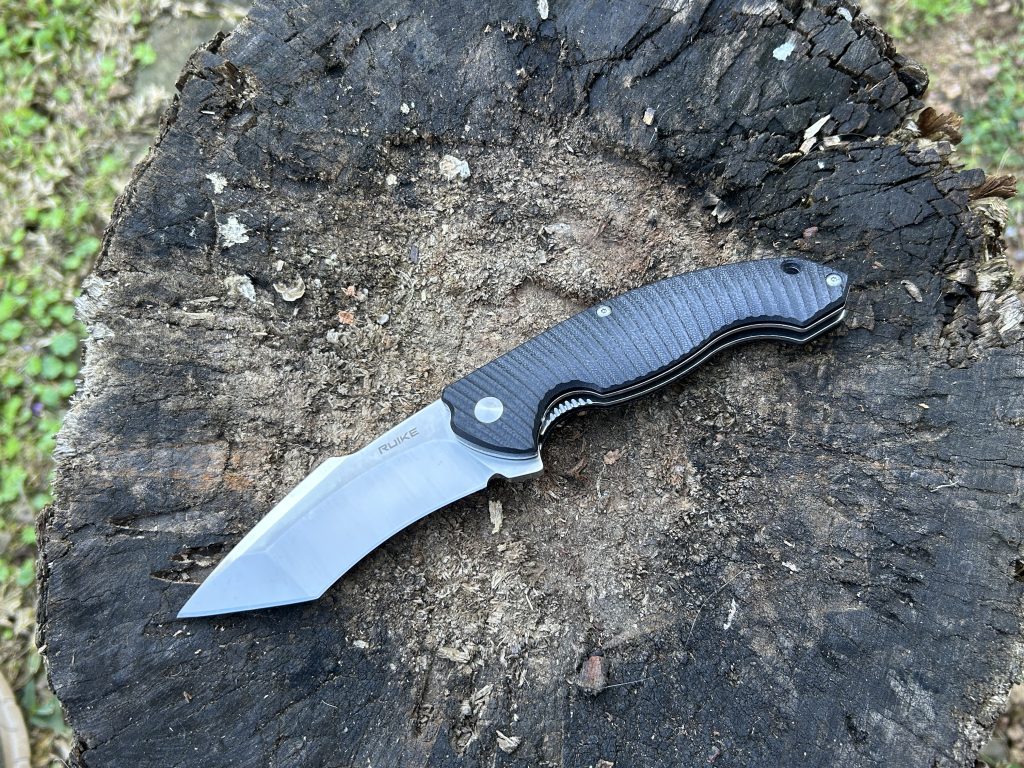
🔍 My verdict
If I were to sum it up: The Ruike P851-B is a very good “bang-for-buck” folder. The combination of good steel (14C28N), G10 handle, one-hand deployment, reliable liner lock + safety, and a sturdy build make it a strong choice for both EDC and more serious use. For many users, I’d happily recommend it as a purchase.
However, it’s not perfect: size may be a bit large for some, the blade shape might not be optimal for every task, and you should be mindful of build finish and carry comfort. If you’re okay with a slightly larger knife and possibly doing a little maintenance, you’ll likely be very happy with it. If you need ultra-light or ultra-small, or want the absolute premium finish/lock system, you might look at higher-tier alternatives.


